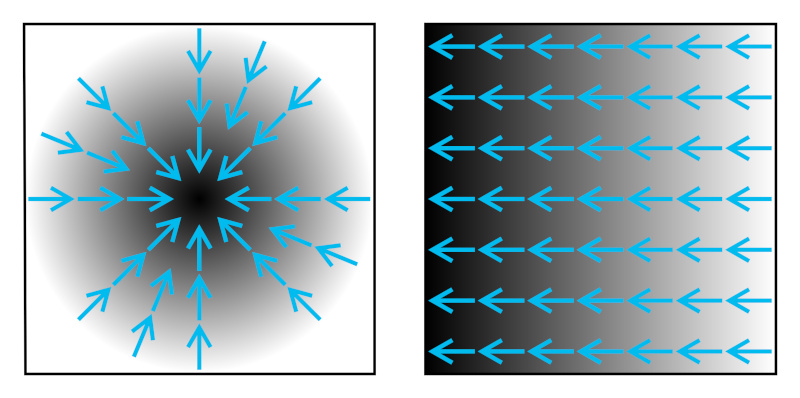
Image description: a field is a portion of space within which a measurable physical quantity, the electric charge. It interacts with the electromagnetic field represented by the curved lines around a magnet.
Many educational definitions explain electric charge, for example:
- Electric charge interacts through electromagnetic fields.
- Electric charge is a force in an electric field and in a magnetic field if it moves.
- Electric charge is a property of matter related to the loss of neutrality of a substance.
- Electric charge is an essential property of elementary particles subjected to electromagnetic interaction.
- Electric charge is something that causes the object that possesses it to experience a force.
- etc.
All these definitions of electric charge do not tell us anything about the actual nature of this charge. This is normal because one cannot grasp electric charge without understanding the concept of "field."
The field is also an abstract concept that our brains cannot imagine because it did not need it during its evolution. Furthermore, it is a quantum concept that is very difficult to visualize. Although we do not have sensory devices to imagine them, fields are indeed real.
Since fields are invisible, the best image is that of iron filings drawing curved lines around a magnet. These lines show us that an "attractive" or "repulsive" force can act at a distance within a portion of space called a "field."
Fields carry the energy of everything that exists in the universe, from atoms to large galactic structures. Magnetism, gravitation, nuclear force, light, and many other physical phenomena are carried by fields.

Image description: concept of gradients. The gradients are the blue arrows indicating where the function increases the most in the field (white = low value, black = high value). credit: By see file history — Own work, CC BY-SA 2.5.
To understand the concept of charge, it is unnecessary to delve into extremely complex explanations of bosons and fermions, electrons and holes, virtual particles and charge movement.
Electric charges are responsible for the electrostatic forces observed between objects.
The value of an elementary charge “e” (i.e., the smallest) corresponds to the charge of a proton or an electron with a value of 1.60217653 × 10^-19 coulombs. Thus, electric charge is a scalar quantity carried by the electromagnetic field. However, ordinary matter tends toward electrical neutrality.
Electric charge interacts with the electromagnetic field like mass interacts with the gravitational field.
These two interactions (electromagnetic and gravitational) are part of the four fundamental forces of nature along with the strong and weak nuclear interactions.
In a gravitational field, mass flows along gravitational gradients (slopes).
In an electromagnetic field, charge flows along electromagnetic gradients (potentials).
Note: When trying to explain a fundamental or deep concept, one faces an interpretative problem often contrary to our intuition. It is very difficult to precisely state in everyday language something exact knowing that any explanation will be incomplete.